Introduction
Hi to all of you that follow Wingham Wildlife Park, quick intro, my name is Tristan Moore, and I am the winner of the under 16 journalist competition, and this is my first blog going forward which I hope you love reading as much as I will writing and sharing with you all!
I began my day a bit nervous driving to the park with my mum on the 9th of August 2024, up until the point Abi (WHO IS SHE?) stood in front of me, and said my name, Tristan? Yes, I’m Abi lovely to finally meet you, at which time my nerves dissipated, and I couldn’t wait to hear about Abi’s experiences and knowledge of Wingham which I had read so much about in my research (I will share some now and in future blogs).
Abi had been working at Wingham for two years and was part of the education department who drove the parks social media platform for some time, with only meeting Abi on arrival, I could feel her passion, and love for the animals which only encouraged me to exhibit and share my own ambitions of being a zoologist one day. Sadly, Abi has now departed Wingham Wildlife Park to further her career, I wish her the very best of luck, thank you Abi.
Carrying on from initial conversations with Abi, I had a whirl wind tour of the park taking notes and snapping pictures, and below is what I would love to share!
Activities and Talks
What a beautiful hot day for blog one, with many animal talks and activities, unfortunately, I was a bit late to view the arts and crafts tables (which were supposed to be amazing!), however, I arrived in time for many great talks by the different staff members (great job gang!).
My favourite part was the penguin feeding, we got to see all the penguins out and eager to get their food, sneaky beggars! The keeper present told many interesting facts about the Humboldt penguins.
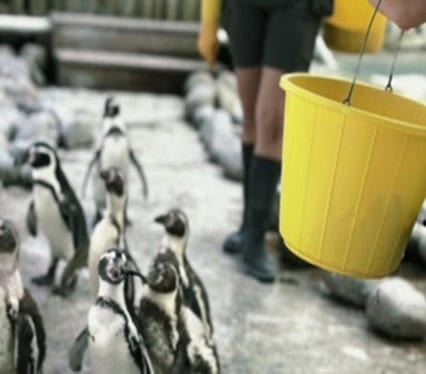
Did you know these birds are excellent swimmers. Their torpedo-shaped bodies can shoot through the water at speeds of 30 miles an hour. And they can dive up to 500 feet underwater in search of snacks such as fish, shrimp, and squid.
The funniest part of my visit was going into the old butterfly house, which is now a new building for lorikeets, where you can go in and feed them or if you’re not keen on hundreds of birds coming to land on you (ok, slight exaggeration, THREE!), then don’t buy the food to feed them, maybe let your younger brother/sister do this, giggling!
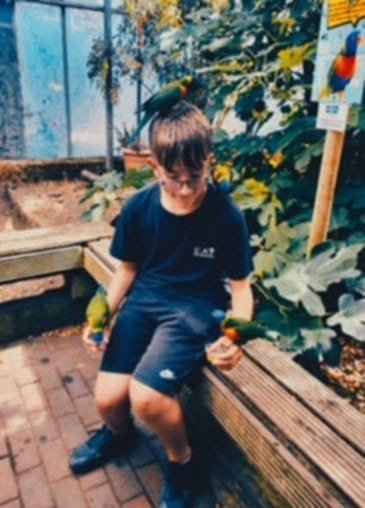
The workers inside the lorikeet building are very kind, knowledgeable and answered many of my questions (did you know Rainbow lorikeets are sweet natured and vibrantly coloured birds that belong to the huge parrot family. They share a lot of characteristics with their distant cousins like cockatoos and macaws. These include being affectionate and incredibly vocal creatures who demand attention. These birds are generally found in Australia, especially in the lowlands where there are abundant of flowering trees.
Hide and Seek from the Sun, or Maybe Exploring & Climbing
As it was such a super-hot day, the majority of animals were trying their best to hide and seek shelter, and shade from the sun. Look at some of the cool pictures I managed to snap.
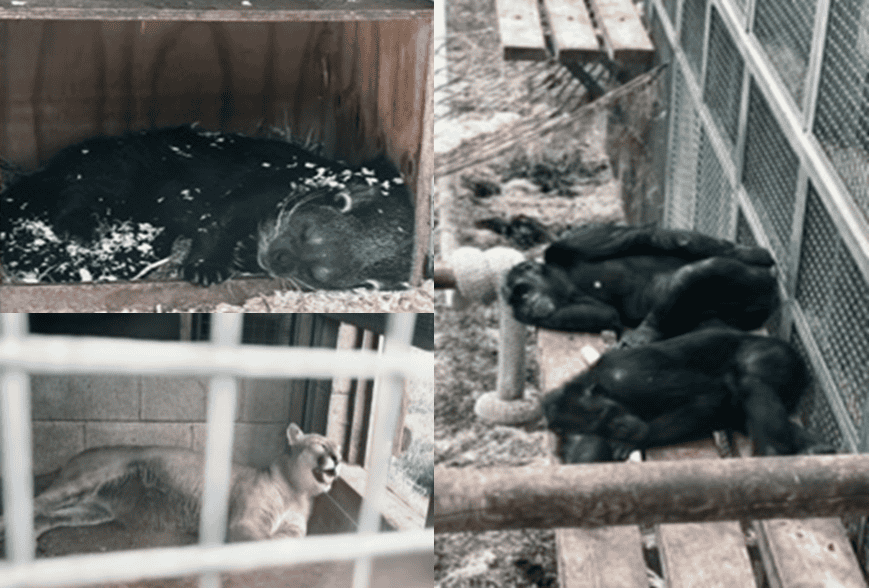
This is great to understand when planning a trip to Wingham, as due to the animals’ lethargic state (tired, sleepy due to the heat and some of their thick fur) you can manage to get some fantastic pictures and can observe them close-up which was fascinating for me to be able to concentrate on their shapes, colours, and look into the habitat they lived.
Not everyone happened be so sleepy, the Amur Leopard (kaia) was so active, exploring and climbing all over her enclosure, I could have watched her for hours and hours, she was so pretty. I was able to get a good picture of her, what do you think?
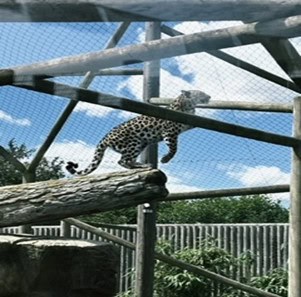
Did you know that Amur Leopards Most people think of leopards prowling the savannas of Africa, but these spotted predators thrive in many different countries and habitats. Amur leopards can be found in the mountainous forests of eastern Russia and northern China. Named after the Amur River, a body of water that runs along the border of both countries, these cats are well adapted to this harsh environment. Their soft, dense fur keeps them warm in the bitter cold, and their large paws work like snowshoes to let them walk on snow without sinking.
New Arrivals
When I first arrived at Wingham, Abi gave big hints that there were new arrivals, so here they are.
Meet Awan the Bornean Orangutan
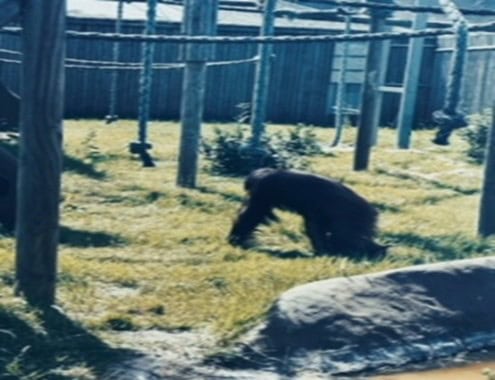
Awan is a 12-year-old female Bornean orangutan who arrived at Wingham from Monkey World on the 11th of July. She has been placed with Jin the male Bornean orangutan for breeding purposes, this is significant for the conservation of their species as they are currently critically endangered, due to habitat loss from deforestation. Did you know on the ground, orangutans walk on all fours. Orangutans find their food in the trees where they live. More than half their diet consists of fruit. They also eat nuts, bark, and other parts of plants and trees. Every once in a while, they eat insects such as ants and termites, as well as bird eggs.
Finally welcome semi-new arrivals Rhona, Remi and Dubh the black and white ruffed lemurs
Rhona, Remi and Dubh arrived on the 28th of June 2024 and our inhabiting the old coati and raccoon enclosure by the penguins. Over the past months they have settled in well to their new surroundings and seem quite content jumping, climbing, playing also being cheeky in their enclosure. Did you know The Black-and-white ruffed lemur is one of the largest lemurs and the second loudest primate after the howler monkey from central and South America. With its striking black and white pattern, it is amongst the most iconic of the lemur species. Its name comes from the large white furry ‘ruff’ around its neck. It is classified as critically endangered, which makes it one of the most endangered of the lemurs, being just one step from extinction in the wild.
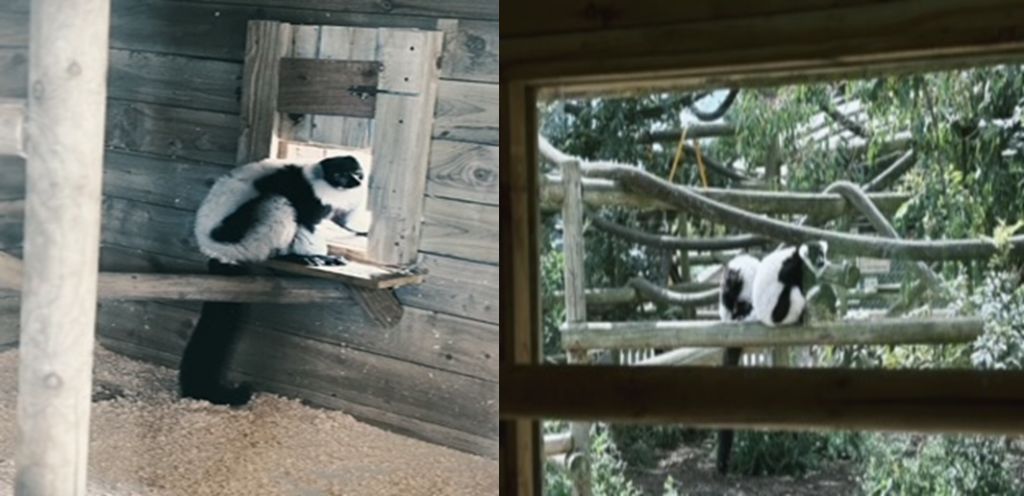
For Tristan’s original article, please CLICK HERE


